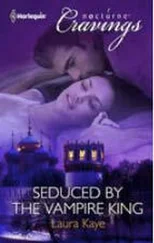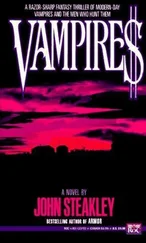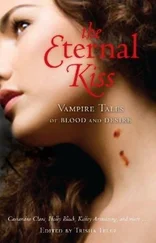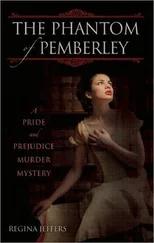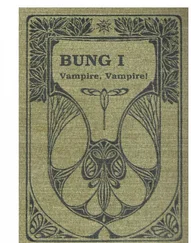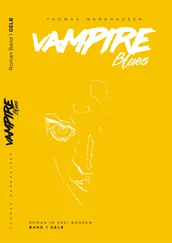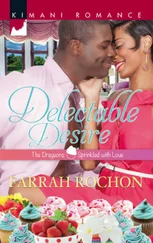Regina Jeffers - Vampire Darcy's Desire
Здесь есть возможность читать онлайн «Regina Jeffers - Vampire Darcy's Desire» весь текст электронной книги совершенно бесплатно (целиком полную версию без сокращений). В некоторых случаях можно слушать аудио, скачать через торрент в формате fb2 и присутствует краткое содержание. Жанр: Старинная литература, на русском языке. Описание произведения, (предисловие) а так же отзывы посетителей доступны на портале библиотеки ЛибКат.
- Название:Vampire Darcy's Desire
- Автор:
- Жанр:
- Год:неизвестен
- ISBN:нет данных
- Рейтинг книги:3 / 5. Голосов: 1
-
Избранное:Добавить в избранное
- Отзывы:
-
Ваша оценка:
- 60
- 1
- 2
- 3
- 4
- 5
Vampire Darcy's Desire: краткое содержание, описание и аннотация
Предлагаем к чтению аннотацию, описание, краткое содержание или предисловие (зависит от того, что написал сам автор книги «Vampire Darcy's Desire»). Если вы не нашли необходимую информацию о книге — напишите в комментариях, мы постараемся отыскать её.
Vampire Darcy's Desire — читать онлайн бесплатно полную книгу (весь текст) целиком
Ниже представлен текст книги, разбитый по страницам. Система сохранения места последней прочитанной страницы, позволяет с удобством читать онлайн бесплатно книгу «Vampire Darcy's Desire», без необходимости каждый раз заново искать на чём Вы остановились. Поставьте закладку, и сможете в любой момент перейти на страницу, на которой закончили чтение.
Интервал:
Закладка:
Table of Contents
Title Page
AUTHOR’S PREFACE
PROLOGUE
CHAPTER 1
CHAPTER 2
CHAPTER 3
CHAPTER 4
CHAPTER 5
CHAPTER 6
CHAPTER 7
CHAPTER 8
CHAPTER 9
CHAPTER 10
CHAPTER 11
CHAPTER 12
CHAPTER 13
CHAPTER 14
CHAPTER 15
CHAPTER 16
CHAPTER 17
CHAPTER 18
CHAPTER 19
CHAPTER 20
CHAPTER 21
CHAPTER 22
CHAPTER 23
CHAPTER 24
CHAPTER 25
CHAPTER 26
CHAPTER 27
CHAPTER 28
CHAPTER 29
EPILOGUE
REFERENCES
OTHER ULYSSES PRESS BOOKS
ABOUT THE AUTHOR
Copyright Page

AUTHOR’S PREFACE
When the initial concept came to me from the publisher, Ulysses Press, to write a vampire version of Pride and Prejudice , my hackles immediately rose. To me, Pride and Prejudice is the most perfect novel ever written, and the thought of someone abusing that story line sent me into a state of amusement mixed with pure irritation.
As a member of the Jane Austen Society of North America, I love everything to do with Jane Austen. However, unlike some hard-core Janeites, I read everything related to her works. Some of it I love, and some of it I throw across the room in disgust; but even when I angrily throw the book at the wall, I retrieve it and continue to read, looking for something in it I can enjoy. There are only a few Austen-related alternatives in which I find nothing I can accept to be possible. Most of those I deem ridiculous, however, deal with the story of Fitzwilliam Darcy and Elizabeth Bennet, because like many Austen readers, I hold a preconceived idea of how these two would get on in their lives once they were married. Austen gives us very specific allusions as to how the couple might achieve happiness, so when presented with the concept, I flatly refused to even consider a vampire version. However, after discussing the idea with close friends and with my editor, I conceded. It was my belief the project would go forward with or without me. At least if I was involved, I could possibly maintain some integrity in the story. In a Gothic or vampire-inspired story, undertones of sex, blood, and death are inherently present, although Jane Austen rarely even hinted at any of these elements in her novels.
Originally, the concept was that Darcy would be the vampire who seduces Elizabeth, yet I could not abide such a proposal. If vampirism was to be added to the tale, I wanted Darcy portrayed as a poetic tragic hero rather than as an embodiment of evil. I also Pride and Prejudice , Darcy needed to desire Elizabeth and to be willing to put aside his beliefs and lifestyle in order to earn her love. As Vampire Darcy’s Desire is a horror romance, a more prominent sexual tension than in the Austen version was obviously required, although any astute reader of Austen feels the sophisticated undertones present in her writing.
My story line is based on the traditional Scottish ballad known as “Lord Thomas and Fair Ellender,” which I used as the core of the curse upon Darcy’s family. The ballad has many versions. Some even call it “The Brown Girl.” It is currently listed as one of the ballads brought back into circulation by Francis J. Child, a renowned “songcatcher.” The story behind the ballad dates back to the time of Charles II. There are Irish, Scottish, and English versions of the song, as well as similar stories in Norse and European folklore. Popular folk singers, such as Jean Ritchie and Alan Lomax, have recorded versions of the song. Even the Grateful Dead has it in their discography. There is an excellent reading found on YouTube, as well. In keeping with the Scottish ballad, I chose Northumberland as the place for Wickham’s home where he is buried because of its proximity to Scotland and because of its numerous border wars. Luckily, Newcastle, where Darcy sends Wickham in the Austen original, is in Northumberland.
In merging the two diverse genres, one must remember that vampire literature springs from early Gothic tales, which ironically peppered the literature of Jane Austen’s time. Typically in early vampire stories, a respectable and virtuous woman rejects a man’s love.The woman is under the influence of a tyrannical and powerful male from whom the “hero” must save her, and that “hero” possesses a highly developed intelligence and exceptional charisma and charm. A “seduction” of sorts occurs. Are those elements not also present in each of Austen’s pieces? After all,Austen herself parodies the Gothic novel in Northanger Abbey , even mocking Ann Radcliffe’s The Mysteries of Udolpho . She uses the stereotypes of the abbey, the mysterious murder, and the evil seducer, yet Austen
I teach English and have done so for more years than I care to count, and so I am familiar with many of the original literary works dealing with vampires. For example, nearly eighty years before Bram Stoker’s Dracula became the standard by which vampire stories are judged, Lord Byron’s life and legend inspired Polidori’s The Vampyre , and even Stoker quoted Gottfried August Bürger’s narrative poem “Lenore” (1773). Samuel Coleridge’s poem “Christabel” also influenced much of the vampire literature that followed.
Yet unlike many modern readers of vampire stories, I realize that some elements of vampire tales come from modern visual media rather than legend or folklore. While doing research for Vampire Darcy’s Desire , I looked more at the types of vampires, ways to kill a vampire, and general characteristics of vampires.Although I learned tidbits about the Twilight series from my female students, I purposely did not read the book, nor did I see the film. I wanted my characterization of vampires to be as original as possible. Most of my reading of vampire stories came many years ago and fell along the lines of Anne Rice’s Vampire Chronicles and Marilyn Ross’s Barnabas Collins series. In fact, I once did a stunt for a Dark Shadows promotion for a Jonathan Frid live appearance; I was the woman in the crowd he grabs and bites. The hardest part of the staging for me was being put in a coffin. I am too claustrophobic!
A great deal of my research dealt with the Baobhan Síth, Scottish vampires, and with Celtic gods, because I used the traditional Scottish ballad to tie my story line together. Also, I revisited the character of Abraham Van Helsing. In his early notes for Dracula , Stoker conceived of three characters that eventually were combined into Van Helsing.Van Helsing represents all the good in the world and is a positive influence in the midst of Dracula ’s chaos. He uses his intelligence to unwind the mystery of the vampire attacks, he leads the hunt to find Dracula, and he is the one who recognizes the need for God’s intervention in ending the demonic possession. Dracula .)
There is also unmistakable social commentary in Vampire Darcy’s Desire . Elizabeth Bennet is an intelligent woman, and like the originalVan Helsing, she uses her “knowledge” as “power.” She leads Darcy in his battle to stop the curse on his family. Darcy, on the other hand, is a Renaissance man in accepting help from a woman.The book also speaks to the natural stratification of human society—the exercise of power over others, those who are weaker .
Some elements of the Gothic are apparent in Vampire Darcy’s Desire : an ancient prophecy; dream visions; supernatural powers; characters suffering from impending doom; women threatened by a powerful, domineering male; and the quick shorthand of metonymy to set the scenes.Yet essentials of romance are just as prominent: a powerful love, with elements of uncertainty about the love being returned; the lovers separated by outside forces; and a young woman becoming the target of an evil schemer.
Читать дальшеИнтервал:
Закладка:
Похожие книги на «Vampire Darcy's Desire»
Представляем Вашему вниманию похожие книги на «Vampire Darcy's Desire» списком для выбора. Мы отобрали схожую по названию и смыслу литературу в надежде предоставить читателям больше вариантов отыскать новые, интересные, ещё непрочитанные произведения.
Обсуждение, отзывы о книге «Vampire Darcy's Desire» и просто собственные мнения читателей. Оставьте ваши комментарии, напишите, что Вы думаете о произведении, его смысле или главных героях. Укажите что конкретно понравилось, а что нет, и почему Вы так считаете.


